As some of you might know, throughout this year we at Music Tomorrow were hard at work on the first round of algorithmic optimization campaigns, aiming to put our RSO framework to practice and develop a set of RSO case studies we could share with the broader industry. Today, we bring you the first of such case studies, showcasing how Music Tomorrow was able to leverage its proprietary data tools to gain clear insight into the algorithmic positioning of an artist on Spotify and develop a an optimization strategy that had a clear and strong positive effect on the artist's algorithmic performance. I would wait until the end of the case study — but if you’re already interested in getting access to our RSO tools and trying our optimization approach on the projects you work with, you can request your demo through this page.
About the Partner.
Handwritten Records is a Las Vegas-based indie record label and management company, working with developing artists across a wide variety of genres, counting projects such as Jean Dawson, King Mala, and The Velvetiens in its roster. Back in early 2023, Handwritten Records joined forces with Music Tomorrow to work on a pilot algorithmic optimization campaign for the upcoming Bishop Ivy’s EP, IRIS, released on August 25, 2023.
About the Artist.
Bishop Ivy is an innovative alternative-pop songwriter, renowned for his distinctive fusion of organic instruments, digital textures, and electronica undertones. Influenced by boundary-pushing artists such as Bon Iver and Frank Ocean, Ivy's music blends mesmerizing falsetto vocals, synthesized electronic elements and unprocessed, natural sounds to craft a unique sonic journey for his audiences.

Campaign Context & Initial Algorithmic Analysis
At the start of the consultancy, Bishop Ivy’s profile presented a complex landscape, leading the team to believe there’s room for algorithmic optimization on the artist profile.
First off, the majority of streaming volume was driven by a single track, 15, released back back to 2019. At the start of the optimization campaign, this top track accounted for nearly 80% of the total monthly streaming traffic on Spotify, with a “healthy” 35% share of algorithmic streams. Yet, the algorithmic performance of other releases, including the project’s most recent EP, parasocial, was very modest, with less than 10% of all streams attributed to recommender-mediated properties. Such data patterns suggested to the team that there might be an underlying algorithmic issue at play.
The initial analysis of the project’s algorithmic profile further confirmed that theory — the first snapshot, dating back to March 15, 2023, clearly showed that the top artist clusters (e.g. a distinct group of artists in Bishop Ivy’s algorithmic vicinity) affiliated with Bishop Ivy’s profile were misaligned with the project’s recent and upcoming releases. While the artist's current releases could be considered sad and mellow, integrating Bishop Ivy’s soulful and tender vocals with elements of r&b, indie pop, and folk, the top clusters revolved around genres like indie poptimism, hopebeat, and modern alternative rock — overwhelmingly upbeat and high in both energy and valence.
Upon further investigation, these problematic algorithmic connections were attributed to the past marketing actions around the artist’s top catalog track, 15. The campaign for that track, while leading to a strong streaming performance, relied heavily on third-party playlist ecosystems that frequently featured upbeat and energetic tracks in the aforementioned genres. So, with 4+ years worth of streaming data tying the artist to the likes of Wldlfe and Hardcastle, the initial algorithmic analysis suggested that the Spotify recommender is very likely to qualify the upcoming releases in similar misaligned spaces. That is, unless the upcoming single rollout incorporated direct actions aiming to re-align the artist’s algorithmic positioning.
To understand how these actions can look, we went deeper into the artist's algorithmic profile. As is often the case with up-and-coming artists, the profile presented a diverse set of audiences — and while the artist clusters at the top of the profile were indeed problematic, other, less pronounced audiences were a much closer match to the sound and mood of the upcoming EP. At the end of the initial analysis stage, a total of three separate, yet complementary audiences were defined as the potential targets for the campaign, namely:
Target Cluster #1:
- Key Artist Reference: Ben Kessler;
- Key Genres: alt z, gen z singer-songwriter, chill r&b
- Sample Playlist
Target Cluster #2:
- Key Artist Reference: Refs;
- Top Genres: indie r&b, chill r&b, vapor soul
- Sample Playlist
Target Cluster #3:
- Key Artist Reference: Jackson Wooten;
- Top Genres: modern indie folk, indie folk, indie anthem-folk
- Sample Playlist
These targets were further validated with direct input from the artist and the team, with a separate primary target assigned to each single in the upcoming cycle. For instance, the first single, apparition eyes, was paired with the alt z / gen z singer-songwriter cluster, while the second single prioritized the modern indie folk audience.
Campaign Implementation
Based on the defined pairings of tracks and algorithmic targets, Music Tomorrow developed a set of tailored recommendations to be integrated with the campaign rollout. Such recommendations included thighs like key editorial and third-party playlist targets, metadata and technical optimization suggestions, and more. In the context of this case study, however, we’ll focus on ad traffic optimization and target audience definition, as digital advertising was the primary lever for the campaign.
For each of the priority audiences established, Music Tomorrow provided a detailed audience definition, sourced with Instagram and Spotify data. Such definitions included the audience age, gender, and location breakdowns, as well as the platform-specific interest filters. In the context of the IRIS campaign, Instagram was designated as the primary ad platform, so the audience definitions also featured targetable genre- and artist-based Facebook/Meta interests. The label team then translated each of the priority audiences provided into a set of ready-to-use Facebook/Meta audiences, that were tested against each other during the first days of release to optimize for ad performance metrics.
Finally, Music Tomorrow also developed a set of optimized playlist landings that featured the artist's tracks alongside relevant algorithmic references. Directing the ad traffic to such playlists allowed Handwritten to not only expose the new releases to relevant audiences but also generate conjoint listenership with relevant artists, further amplifying the impact of the algorithmic optimization campaign.
Campaign Results:
Now, before we get to this closing section, let’s get through a few important sidenotes. Obviously, it is impossible to definitively attribute the success (or the flop, for that matter) of a release campaign to a single factor. For every campaign, there are hundreds if not thousands of elements affecting the overall release performance, and we can’t possibly account for all of them. Yet, we believe that with the data we’re about to present, we can make a pretty solid argument for a strong, sustainable positive effect of the optimization campaign on both algorithmic and overall release performance.
To put the data into perspective, we’ll benchmark the performance of the IRIS EP (released August 25, 2023), with the performance of the project’s previous EP, parasocial (released October 15, 2021). Both EPs followed a similar cycle pattern with multiple singles rolled out over six months leading into the EP release. Both campaigns featured Instagram as the primary platform, with comparable ad budgets falling into the $2-2.5k range. Finally, in the two years separating the releases, there was no significant uplift in the artist following on social media or DSPs — so both releases had a comparable footing in terms of organic artist audience. The data presented below is based on all-time streaming volume, sourced directly from Spotify for Artists in late September 2023, about 3 weeks after the release of the IRIS EP.
So, how did the optimization campaign affect the algorithmic performance of the IRIS EP? First, let’s benchmark the share of algorithmic traffic — which is one of the more straightforward metrics to assess the algorithmic favor of a given release:

As we can see, IRIS comes out on top — with nearly 45% algorithmic share, the newly released EP overtook not only the previous release but also the artist’s top catalog track, which was at the core of their algorithmic profile at the start of the consultancy. In our experience, the algorithmic share of 40% is a very hard bar to clear for most projects, especially with no Discovery Mode push. But before we jump to conclusions, let’s see how the two EPs stack up in absolute number of streams:

Yes, indeed: in 3 weeks after the full EP release (and about 6 months after the release of the first single of the cycle) IRIS generated more streams via algorithmic placements, than ALL streams the previous EP did in over two years. Then, if we were to isolate the algorithmic traffic, the IRIS EP generated 11 times more algorithmic streams, compared to the previous EP — with most of these streams sourced by high-value/high-engagement Discover Weekly and Release Radar placements.

So, what do we make of it all? Well, in a way, Bishop Ivy’s campaign was a perfect playground for us to showcase its optimization framework — a developing artist with a problematic algorithmic profile, and a forward-thinking label team ready to take the leap with Music Tomorrow. However, if there’s anything we’ve learned in the past year working with Handwritten and our other early adopters, is that every artist profile is a unique challenge that requires a unique strategy.
There are millions upon millions of data points behind every recommendation made on streaming platforms — and not even the Spotify personalization team will be able to fully explain why a specific track lands on a user’s Discover Weekly. Yet, with the right insights and the right strategy, the artist teams can work with (and not against, as is often the case today) the recommenders to make sure that the right audiences are paired with the music that’s right for them — and vice versa.
If you made it this far, I’ll assume you’d be curious to learn more about our tools and frameworks, or maybe even try our optimization approach with some of your artists. So, it’s time for a shameless plug: here are a few links to help you on your journey towards Recommender System Optimization.
First off, we’ve just added a new course on Music Tomorrow Academy that will guide you through the mechanics of recommender systems, present our optimization tools and help you develop your own algorithmic optimization strategies — check it out here. Then, if you’re curious to know more about this particular case study, we’ll break it down further in a live session (scheduled for October 24th) as a part of our Music Marketing Data Bootcamp we developed in partnership with Water & Music. You can either sign up for the whole bootcamp or this session alone, but make sure you do it now — spaces are limited. And finally, if you’d like to get straight into it and integrate our algorithmic data insights with your upcoming campaigns, request a demo with our team via this page.















